Ditapis dengan

Keputusan Bersama Menteri Kehakiman & HAM RI dan Kepala BKN Nomor : M.390-KP.…
-
- Edisi
- -
- ISBN/ISSN
- -
- Deskripsi Fisik
- 111 p. : Illus. ; 21 cm
- Judul Seri
- -
- No. Panggil
- -
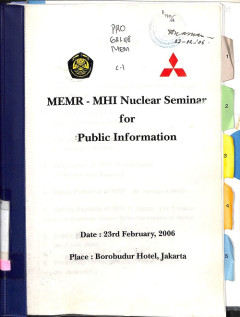
MEMR-MHI Nuclear Seminar for Public Information, Date: 23rd February, 2006, B…
Proceedings contains material: Agenda; Role of NPP in ensuring long term energy supply; Energy policy of Indonesia; Status of NPP preparation in Indonesia; Regulation of NPP in Indonesia; Basic features of NPP; Safety aspects of NPP in Japan; Public information & education; and Financing for Indonesian power sector. (Jml)
- Edisi
- -
- ISBN/ISSN
- -
- Deskripsi Fisik
- - p. : Illus. ; 30 cm
- Judul Seri
- -
- No. Panggil
- 621.48 PRO n
Laporan Akhir Dewan Pengarah Badan Rehabilitasi dan Rekonstruksi Wilayah dan …
Laporan ini berisi kegiatan Dewan Pengarah sebagaimana tugas pokok dan fungsinya, yaitu dalam memberikan arahan terhadap perumusan perencanaan dan pelaksanaan proses rehabilitasi dan rekonstruksi kepada semua pemangku kepentingan terkait, terutama kepada Badan Pelaksana BRR NAD dan Nias dalam melaksanakan kegiatan rehabilitasi dan rekonstruksi di wilayah Provinsi NAD dan Kepulauan Nias Provinsi…
- Edisi
- -
- ISBN/ISSN
- -
- Deskripsi Fisik
- xiii, 119 p. : Illus. ; 30 cm
- Judul Seri
- -
- No. Panggil
- 363.3 BRR l
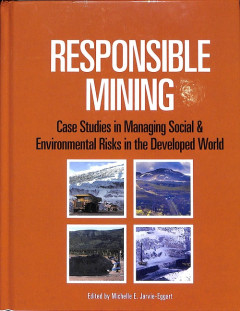
Responsible Mining: Case Studies in Managing Social & Environmental Risks in …
This book presents common themes and best practices for managing social, economic, and environmental risks and impacts at mines in the developed world. Although the term sustainability is often applied to efforts to address social, economic, and environmental risk and impacts, many struggle with its application to the extraction of nonrenewable resources. Obviously, a finite amount of mineral d…
- Edisi
- -
- ISBN/ISSN
- 9780873353731
- Deskripsi Fisik
- 788 p. : ills. ; 25,5 cm
- Judul Seri
- -
- No. Panggil
- 622.0286 EGG r
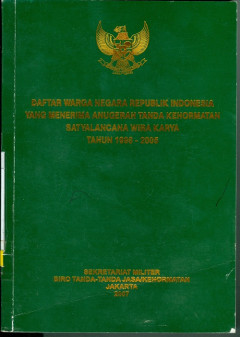
A Practical Guide to Needs Assessment, Second Edition
This book combines a how-to text and reference tool for trainers, performance improvement professionals, and students. Managers and community leaders use it to get to the root of their learning and performance problems, make effective decisions, and obtain support for their most pressing issues. (Jml)
- Edisi
- Second edition
- ISBN/ISSN
- 9780787982720
- Deskripsi Fisik
- 336 p. : illus. ; 24 cm
- Judul Seri
- -
- No. Panggil
- 658.3124 GUP p
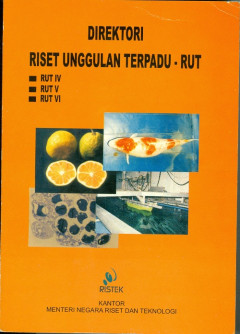
A Practical Guide to Needs Assessment, Third Edition
This book is for anyone seeking a methodical approach to needs assessment. Included are the following tools: worksheets, ready-to-use forms, and templates for planning a course of action. The accompanying disk, packed with job aids, enables you to customize materials for your own use. You'll learn how to: overcome barriers to success; prepare interviews and surveys; accelerate the data-gatherin…
- Edisi
- Third Edition
- ISBN/ISSN
- 9781118457894
- Deskripsi Fisik
- 402 p. : illus. ; 24 cm
- Judul Seri
- -
- No. Panggil
- 658.3124 SLE a

Nuclear Science and Technology in the 21st Century
Nuclear development can be defined, in a broad sense, as nuclear science and technology, which are both based on the reactions involved in radiation such as neutrons, gamma rays, and other charged particles with nuclei. The nuclear reaction is the shared basis of nuclear science and technology, and the nuclear development must be more than simply development of energy sources. On the long ter…
- Edisi
- -
- ISBN/ISSN
- -
- Deskripsi Fisik
- -
- Judul Seri
- -
- No. Panggil
- -
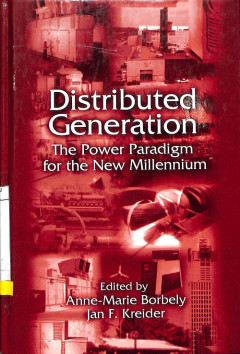
Distributed Generation: The Power Paradigm for the New Millennium
Distributed generation is not a new concept. Originally, all energy was produced and consumed at or near the process that required it. A fireplace, wood stove, and candle are all forms of "distributed" - small scale, demand-sited - energy. So is a pocket watch, alarm, or car battery. The key to today's energy revolution, however, involves turning the resource clock backwards (from large power p…
- Edisi
- -
- ISBN/ISSN
- 0849300746
- Deskripsi Fisik
- vii, 400 p. : Illus. ; 24 cm
- Judul Seri
- -
- No. Panggil
- 333.79 Bor d
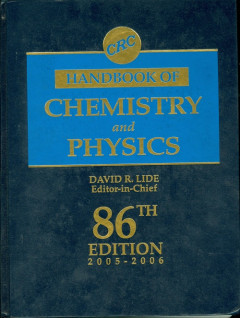
Chemical Reaction Engineering and Reactor Technology
- Edisi
- -
- ISBN/ISSN
- 9781420092684
- Deskripsi Fisik
- 615 p. : illus. ; 26 cm
- Judul Seri
- Chemical Industries/125
- No. Panggil
- 660.2832 Sal c
- Edisi
- -
- ISBN/ISSN
- 9781420092684
- Deskripsi Fisik
- 615 p. : illus. ; 26 cm
- Judul Seri
- Chemical Industries/125
- No. Panggil
- 660.2832 Sal c

Buletin Reaktor (Pengelolaan Reaktor Nuklir), Volume XII No. 1, April 2015
- Edisi
- -
- ISBN/ISSN
- 02162695
- Deskripsi Fisik
- 83 p. : illus. ; 28 cm
- Judul Seri
- Buletin Reaktor
- No. Panggil
- 050 RSG b (02/2014)
- Edisi
- -
- ISBN/ISSN
- 02162695
- Deskripsi Fisik
- 83 p. : illus. ; 28 cm
- Judul Seri
- Buletin Reaktor
- No. Panggil
- 050 RSG b (02/2014)
 Karya Umum
Karya Umum  Filsafat
Filsafat  Agama
Agama  Ilmu-ilmu Sosial
Ilmu-ilmu Sosial  Bahasa
Bahasa  Ilmu-ilmu Murni
Ilmu-ilmu Murni  Ilmu-ilmu Terapan
Ilmu-ilmu Terapan  Kesenian, Hiburan, dan Olahraga
Kesenian, Hiburan, dan Olahraga  Kesusastraan
Kesusastraan  Geografi dan Sejarah
Geografi dan Sejarah